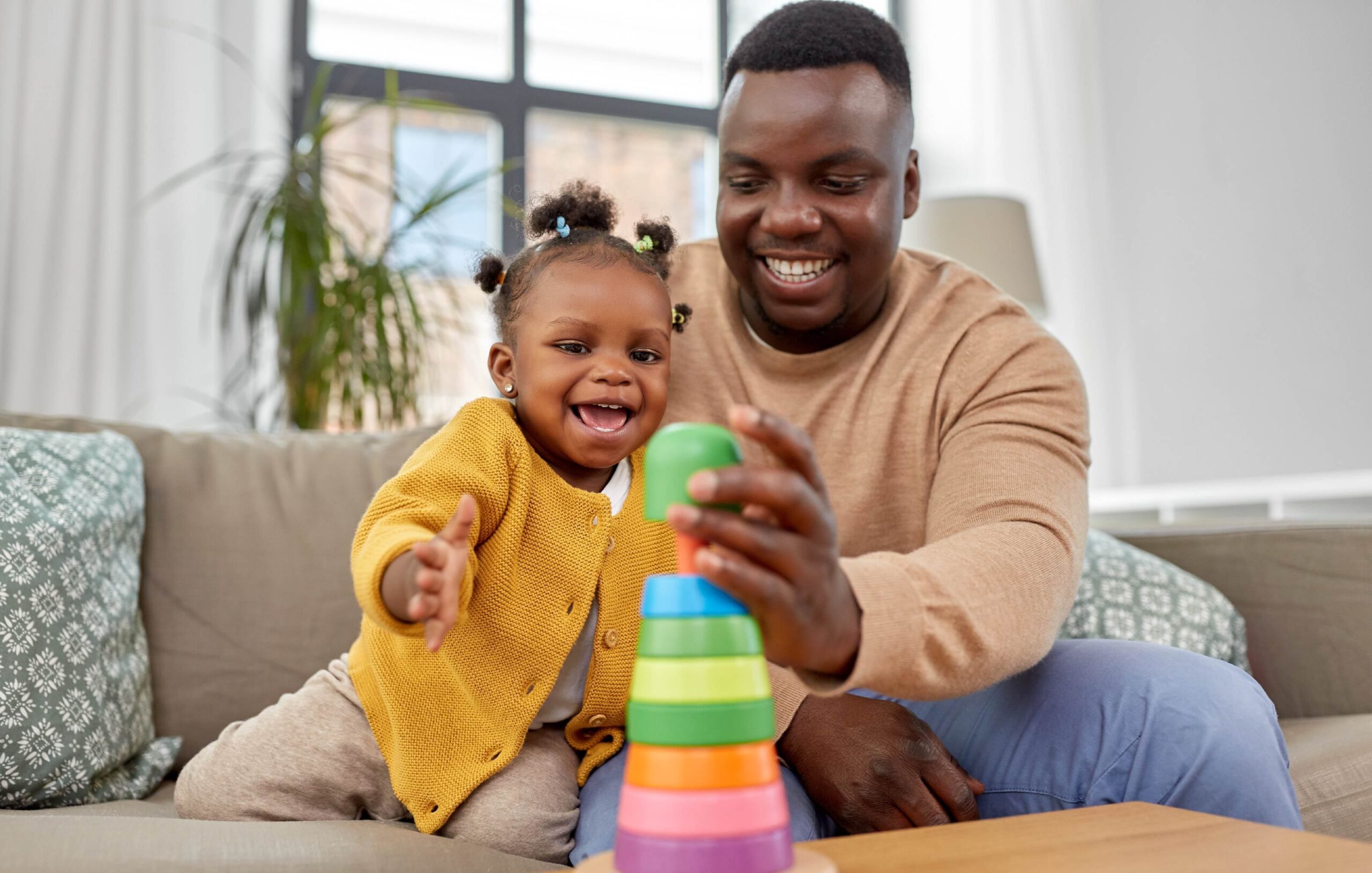5 Ways AEPS-3 Accommodates Diversity
PublishedJust as early childhood programs differ in philosophy, approach, and services offered, children and families represent a spectrum of developmental levels and cultural traditions. Providing effective services for a variety of children and families requires personnel, delivery approaches, practices, and associated materials that meet recommended practices and early childhood standards.
Several important features of AEPS-3 align with standards to successfully address diversity in children and families:
AEPS-3 Provides Comprehensive Developmental Content
AEPS-3 materials are designed to accommodate the developmental range from birth through 6 years of age. This feature of the test, curriculum, and family support materials makes it possible to use AEPS-3 with young children whose skill levels vary widely, including children who are developing typically, are learning English or have resettled from other countries, are at risk for or have developmental delays, and have documented disabilities.
The AEPS-3 Test content covers eight developmental areas, with each area composed of strands that organize behaviors and skills into functional groupings. Each strand is composed of goals and objectives that are arranged incrementally or hierarchically from most basic to increasingly more difficult and complex behaviors. Each area’s goals and objectives provide comprehensive coverage of that developmental area, allowing the user to assess children from the very earliest stages of development to those with skills typical of 5- to 6-year-olds. This breadth of developmental coverage lets users accurately assess children’s skills and abilities from birth through age 6. The AEPS-3 Curriculum aligns with the test’s content and offers an activity/routine-based, multi-tiered structure that embeds specific AEPS-3 skills in a flexible format to meet the learning needs of all children at home and in classrooms.
AEPS-3 Accommodates Individual Differences
AEPS-3 is designed to accommodate individual differences in both children and family members. Flexible content and implementation allow it to be used with children and adults whose behavior, competence, and values vary widely. Goals and objectives are written in generic language to accommodate a broad range of behaviors. For example, in the Fine Motor area, items ask whether the child can pick up a pea-size object rather than a specific object like a raisin. Another item asks if children can use two hands to manipulate objects, not limiting the types of objects that can be used to assess the item. In the Cognitive area, an item asks if children can ask questions but does not specify the questions to be asked or words to be used—therefore, a Spanish-speaking child can receive credit for asking questions in either English or Spanish and is not penalized for a having a limited English vocabulary. Similarly, a child with a significant hearing impairment who uses American Sign Language (ASL) can receive credit for communicating using signs.
The curriculum routines and activities are written so that teaching/intervention strategies are applicable across a variety of environments and familiar materials. The AEPS-3 Curriculum routines and activities offer multiple learning opportunities that are appropriate for children across developmental levels and cultural contexts. Routines and activities are consistent without regard to whether a child is developing typically or has significant disabilities, and they include suggestions for specialized equipment and materials to accommodate specific needs. The curriculum is structured to help a teacher or interventionist use a tiered approach and to intentionally increase the intensity and frequency of teaching/intervention strategies as necessary to help children learn targeted skills. The AEPS-3 Curriculum is designed to meet the learning needs of all young children in high-quality early childhood learning environments and to support teaching children who require intensive interventions within the context of ongoing routines and activities at home and at school.
AEPS-3 Accommodates Cultural Differences
There is a growing demand for professionals to address the increasing diversity in racial, ethnic, socioeconomic, linguistic, and educational characteristics of children and caregivers. AEPS-3’s content is generic and flexible, enabling accommodation of cultural differences, so professionals can assess and teach within the philosophies, beliefs, schedules, and expectations of each family and classroom.
The AEPS-3 Test yields accurate results for children across diverse cultural and linguistic backgrounds because items are scored by observing children in their typical daily activities with familiar materials and people. Items and item criteria can be adjusted to accommodate disabilities and cultural differences. For instance, using utensils during mealtime is an important skill for most children. Depending on the family’s expectations and practices, eating with utensils might involve a spoon, fork, chapati bread, or chopsticks. For a child with a motor disability, the item might be modified to accommodate a specially designed utensil. AEPS-3 Test content is available in English and Spanish and can be modified as needed for cultural relevance. For interpreters and translators, the highly relevant, broad concepts support flexibility in finding equivalent ways to examine similar learning targets.
The AEPS-3 Curriculum also makes it possible to teach skills within the context of daily activities common across a wide range of family and classroom schedules, such as mealtime, sleeping, dressing, circle time, and writing. The curriculum encourages professionals to consider the influence of cultural values and expectations on children’s social-communication skills and social behavior when developing goals and plans—for example, by identifying when a family’s culture may discourage eye contact or when less structured communication occurs at home than at school. The influence of a child’s culture provides an important foundation for teaching/intervention by suggesting themes and materials that reflect different backgrounds.
The AEPS-3 Child Progress Record, Family Report, and Family Assessment of Child Skills (FACS) also accommodate cultural differences. The Child Progress Record’s visual format makes it an ideal tool to use with families whose home language differs from that of the professional. Simplified descriptions of the test’s developmental areas and goals make it possible for the family to see and understand how their child’s performance changes over time following teaching/intervention. AEPS-3 Family Report and FACS make it possible for families to become actively involved in the assessment and intervention process. The Family Report elicits helpful information from caregivers about children’s participation in daily family and community activities, along with family priorities and concerns within their own cultural contexts. The FACS makes it possible to share specific information about a child’s performance on AEPS-3 goals among professionals and families. All three family forms are available in English and Spanish.
AEPS-3 Incorporates Authentic Assessment and Teaching/Intervention Practices
AEPS-3’s use of authentic assessment and teaching/intervention practices is another feature that enhances its applicability with children/families with diverse backgrounds and values. Authentic assessment differs from traditional standardized testing in several ways:
- Data are collected as children engage in daily tasks and play in familiar environments.
- The test items are directly linked to curriculum routines and activities.
- The system is multidisciplinary and comprehensive.
- Families have a unique and important role in assessment and teaching/intervention practices.
It may be particularly important to use authentic assessment for children who are culturally and linguistically diverse or children with disabilities, who may have difficulty demonstrating their knowledge and skills under standardized testing conditions.
Authentic or naturalistic teaching/intervention practices are also an important element of accommodating diversity. The AEPS-3 Curriculum is routines-based, building on the naturalistic approach known as activity-based intervention. This approach not only relies on embedding target goals and objectives in children’s play and routine activities but also takes into account children’s individual interests and motivations.
AEPS-3 Encourages Interdisciplinary Perspective and Collaboration
AEPS-3 is designed to encourage an interdisciplinary perspective and promote collaboration among professionals. This feature makes it possible for program staff to work together to use all the available resources to support change and growth in participating children, no matter their developmental competence or family culture. AEPS-3 encourages all team members, individuals, and organizations involved in the assessment process to communicate and exchange information. One individual working with a team can complete the AEPS-3 Test, or each team member can complete an area associated with their expertise and then share the results. The AEPS-3 Curriculum shares these same features.
These key features make AEPS-3 an ideal choice for today’s increasingly diverse early childhood programs. Professionals can use AEPS-3 with confidence, knowing it meets the needs of children of varying developmental levels and cultures.
Today’s post has been excerpted and lightly adapted from the AEPS®-3 User’s Guide (Volume 1), by Diane Bricker, Ph.D., Carmen Dionne, Ph.D., Jennifer Grisham, Ed.D., JoAnn (JJ) Johnson, Ph.D., Marisa Macy, Ph.D., Kristine Slentz, Ph.D., and Misti Waddell, M.S.



